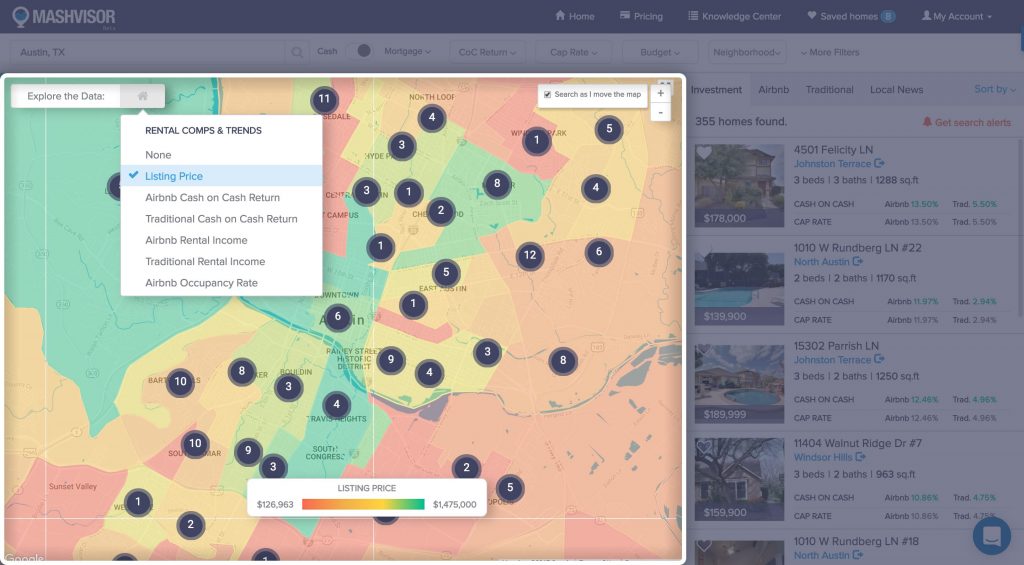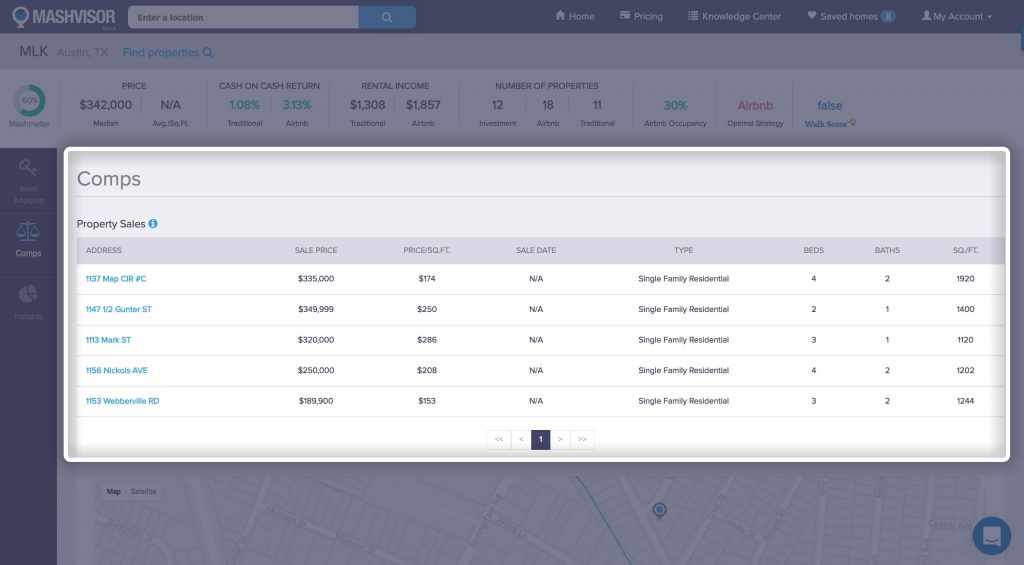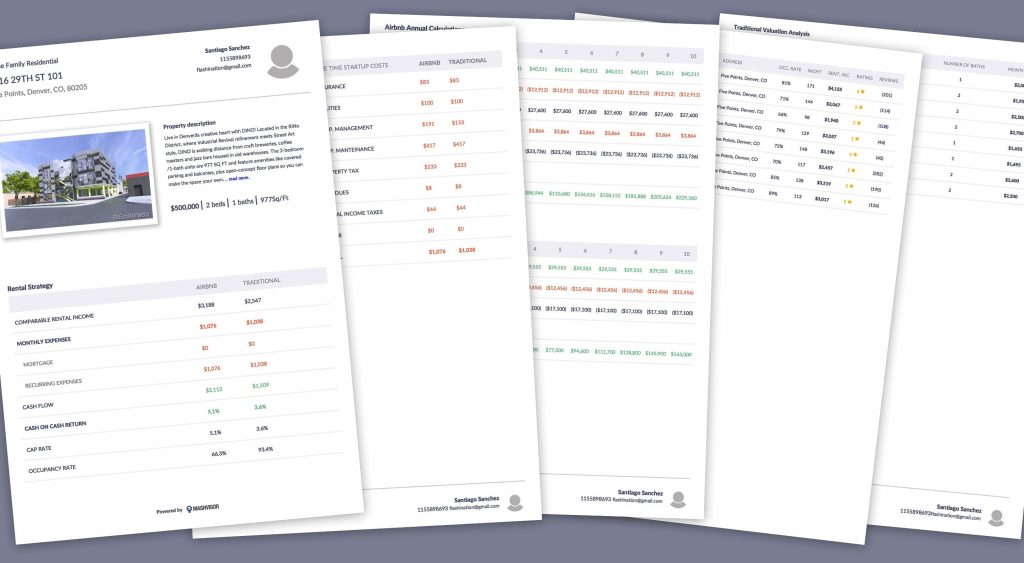This series of articles aims to explain the different aspects of investment analysis in real estate investing, which include an investment property analysis, a comparative market analysis, and the property valuation methods, while also explaining the different aspects of each and the tools used to conduct an investment analysis with ease and at high efficiency.
What Is Investment Analysis in Real Estate Investing?
That is a question that every real estate investor, whether new to the field or with many years of experience in his/her resume, should know the answer to.
Investment analysis is not a term that is exclusive to real estate investing. It is a term that is used by investors in general when an investment opportunity arises, and it is used to determine the quality of the investment, its viability, its profitability, and several other aspects related to it.
So, the most basic definition of investment analysis is the process of analyzing an investment opportunity to determine whether or not this opportunity can help the investor achieve his/her investment goals or not.
Since each investor has his/her own goals that he/she is trying to achieve through his/her investments; be it for pure profits, investment diversification, or any other number of reasons; an investor cannot go blindly into the business without having any goals or expectations, or without having a solid plan and projections of what investment aims to achieve.
In real estate investing, investment analysis is no different, and perhaps it is even more crucial for the success of any real estate investment.
Related: How is Real Estate Market Analysis Different From Stock Market Analysis?
But what exactly is real estate investment analysis? How is it used by real estate investors to determine all the different aspects of their investments before they rush into them and risk losing their money and their time due to the lack of a solid plan or investment strategy?
The Different Aspects of Real Estate Investment Analysis
In real estate investing, there are several different aspects of investment analysis, and perhaps even more than any other type of investment out there.
This can generally be attributed to the unique nature of real estate investing or the housing market in general.
Since real estate is unique in the fact that it revolves around static objects in severely dynamic environments, there are numerous aspects and factors that play a role in the constant change in the value of real estate properties, many of which are extremely difficult to anticipate or to predict, such as the factors that can lead to an investment property’s appreciation, while other factors are straightforward and easier to plan around despite them being out of control, such as the rotation of seasons and their effects on the performance of real estate properties throughout the year.
So, in order for a real estate investor to conduct real estate investment analysis, he/she has to take all of these aspects into consideration when planning an investment and building an investment strategy.
But, generally, the different aspects that must be taken into consideration in real estate investment analysis can be broken down into a few categories.
Note: Click Here to Start Searching for Investment Properties with Readily Available Investment Analysis!
The Location and the Environment
The location of an investment property is perhaps the most important and influential aspect affecting the property’s performance and its viability for the different types of investment strategies that may apply to it.
In real estate investing, it is said that location is everything. In this case, we would like to include the environment as an integrated part of a property’s location, as the environment of each location is a static factor that is inseparable from its space.
In investment analysis, the factors of location and environment are not factors that the real estate investor can modify as he/she goes, and once the location of an investment property is decided, it cannot be changed.
So, before making any further decisions towards investment analysis, once a real estate investor has chosen a location for his/her investment property, this location and any aspects of it that might affect the investment property and its performance must always be taken into consideration.
An example of this would be a real estate investor who chooses to purchase an investment property in an area that is moderately warm in the summer but gets very cold in the winter. Then the investor should plan the investment strategy around this seasonal effect of the location.
In investment analysis, this is done by doing the necessary calculations and considerations for this seasonal effect on the financial performance of a real estate investment property. So, if the said investor chooses to purchase a property in this area with the goal of renting it out on Airbnb, then it should be considered in his/her analysis that the property’s performance and profitability in the winter will be severely reduced, and might even cause more losses through its running expenses than the profit that it makes during the summer season.

Investment Analysis: Real Estate Investing
But, while the location and the environment should be the foundation on which you build your investment strategy and base your investment analysis, they are still static aspects that are also out of the real estate investor’s control beyond the initial choice of this location.
Beyond the choice of the location that the real estate investor has to make, the real investment analysis comes into play, and the more controllable aspects become relevant.
Note: Click Here to Start Searching for Investment Properties in the Best Performing Locations in the US!
Related: What Is Location in Real Estate Investing?
Comparative Market Analysis
After deciding on a location for an investment property, a real estate investor will now need to study the market in which he/she intends to invest and determine the strengths and weaknesses of the market in order to be able to choose an investment property that performs well in it, and preferably better than the average property in the market.
Just like investment analysis has many different aspects to it, market analysis also has a number of different aspects that need to be taken into consideration.
First, the most general aspect of market analysis that needs to be taken into consideration is the overall performance of the market.
This can be done by researching the investment activity in the market, the average performance of investment properties in it, the availability of investment opportunities within it, and where this market is headed in the near and far future.
Based on the results, a real estate investor can generate a more accurate idea of what to expect from investing in this market. After doing enough research on the market, a real estate investor should be able to determine the average prices, returns, and overall performance of investment properties in the market, which will all be used to conduct further market analysis that is more relevant to the individual investments, and that is an inseparable part of the investment analysis.
Second, after gathering enough data, a real estate investor needs to conduct comparative market analysis. These, however, should be conducted after deciding on an investment property, or a number of potential investment properties in that market, and after doing investment property analysis to gather enough data to compare to the overall data of the market.

Investment Analysis: Real Estate Investing
The comparative market analysis will be explained further in its own articles. But what it generally refers to is market analysis which is based on the collected data of a large number of investment properties in the area and comparing this data to the expected performance of the potential investment properties that the real estate investor has decided on.
These market analysis techniques allow the real estate investor to determine how well or how bad his/her choices of investment properties are in comparison to the overall performance of the market and the overall performance of other competing real estate investors and investment properties in the area.
Learn More: Comparative Market Analysis: Real Estate Investing
Investment Property Analysis
After deciding on a number of potential investment properties in the market, a real estate investor needs to do investment property analysis to determine the different aspects that are related directly to the performance of the chosen investment properties, independent of the performance of the overall market.
What this means is that investment property analysis does not take into consideration the area’s averages, instead it calculates the estimated returns and performance of an investment property based on its individual stats and projections, such as its price, type, size, and the amount of renovation or repairs needed to make it viable.
The investment property analysis should also heavily revolve around the investment strategy of choice that the real estate investor is going to use. If an investor intends to use an investment property as an income property through renting it out, then the investment property analysis should focus heavily on maximizing the rental income and reducing the operational expenses of the property in order to maximize its profits. Meanwhile, an investor who intends to renovate the investment property to raise its market value and sell it at a higher price should focus on the expenses of renovating the property and its purchase and sale prices in order to guarantee a profit on the transaction.
There are a number of different metrics that are essential in investment property analysis and that are used to determine the different values of an investment property and its viability for the real estate investor.
Generally, there is one metric that is more important than any other – the return on investment. This metric simply lets the real estate investor know whether an investment property is worth the while or not by giving him/her an accurate estimate of how profitable the investment property is going to be compared to how much it would cost to invest in it.
The return on investment can be calculated in many different ways, however, and each has its own use or value when doing investment property analysis.
For example, there are two very commonly used metrics to calculate an investment property’s return on investment, and these are the cap rate and the cash on cash return.
These two values can indicate very different aspects of the property, and real estate investors may prefer one over the other when doing investment property analysis based on their own investment criteria and goals.
The cap rate, for example, is used to calculate the return on investment of an investment property based on the property’s actual current value, without taking into consideration the means used to finance the purchase of the property.
The cash on cash return, on the other hand, is used to calculate the return on investment based on the actual cash invested in the property, excluding the amount of borrowed money that was used in the purchase.

Investment Analysis: Real Estate Investing
We will explore the different aspects of an investment property analysis and the different metrics used in investment property valuation in more detail in a different article.
Learn More: Investment Property Analysis: Real Estate Investing
The Tools Used to Conduct Investment Analysis
Investment analysis seems like a daunting and time-consuming task that requires real estate investors to invest a lot of time and effort in order to make their investment decisions, and that is very true.
Typical real estate investment analysis may take months, and sometimes even years, to conduct and to have accurate results that a real estate investor can base investment decisions on.
From researching the different locations, their pros and cons, to obtaining enough info and data through research to do market analysis, to acquiring the necessary data and calculating it to do investment property analysis – these are all steps that a real estate investor cannot skip, and each one of these tasks can require a huge amount of time and effort to carry out.
However, due to the necessity of it, the emergence of new technologies in our modern age has allowed real estate enthusiasts and entrepreneurs to develop a very wide variety of tools, websites, and services that can help real estate investors acquire the necessary data and conduct their investment analysis and all aspects related to it with more ease and at much higher speed than ever before.
There are numerous amazing tools and services out there, most of which are accessible to everyone through the internet or through online databases, that can make the process of investing far less intimidating and more accessible to anyone.
For this reason, real estate investing is becoming more and more popular, especially for millennials who grew up in the age of technology and the internet, and who are also very serious about finding financial freedom and financial independence through different types of investments.
Nowadays, any prospective real estate investor or enthusiast is able to go online and learn about all the different aspects of real estate investing and start investing right away.

Investment Analysis: Real Estate Investing
Note: Click Here to Start Searching for Investment Properties Using Some of the Best Tools Available Online!
Some of the available online sources and tools that a real estate investor can use include websites that provide a large amount of readily available data and calculations using interactive tools and maps that can help any real estate investor find the optimal investment property for his/her business, such as Mashvisor, which provides its users with a wide variety of tools that can help them locate properties and provide them with readily available market analysis and investment property analysis, saving them invaluable amounts of time and effort in the process.
Related: How Mashvisor Revolutionized Cap Rate and Investment Property Analysis
If you’d like to learn more about the available tools and services that any real estate investor can access to make his/her real estate investment career more successful and more seamless than ever before, you can read all about it in a follow-up article on this specific topic.
Learn More: Investment Analysis Software: Real Estate Investing
Bottom Line
Investment analysis is a cornerstone of any investment, especially in real estate investing.
Without investment analysis, an investor may find himself/herself facing severe losses, and all his/her investments will have a high rate of risk associated with them due to not having a solid foundation to base his/her investment plans and strategy.
While this article covered all the different aspects of real estate investment analysis, in reality, it only touched on the surface of each aspect, including comparative market analysis, investment property analysis, the different property valuation methods, and the metrics used in assessing an investment property and its return on investment. All of these aspects will be discussed in more detail, with more actual examples and illustrations, and in a more comprehensive manner in other articles that tackle the general topic of investment analysis.
For more articles, blogs, guides, expert tips, and advice all related to real estate investing, visit our blog section. We have 1,000+ blogs that cover every topic that you may think of related to real estate.
Additionally, if you want to access Mashvisor’s platform and its tools to obtain readily available investment analysis and find the perfect investment property based on it, you can click here and start searching your area of choice right away!